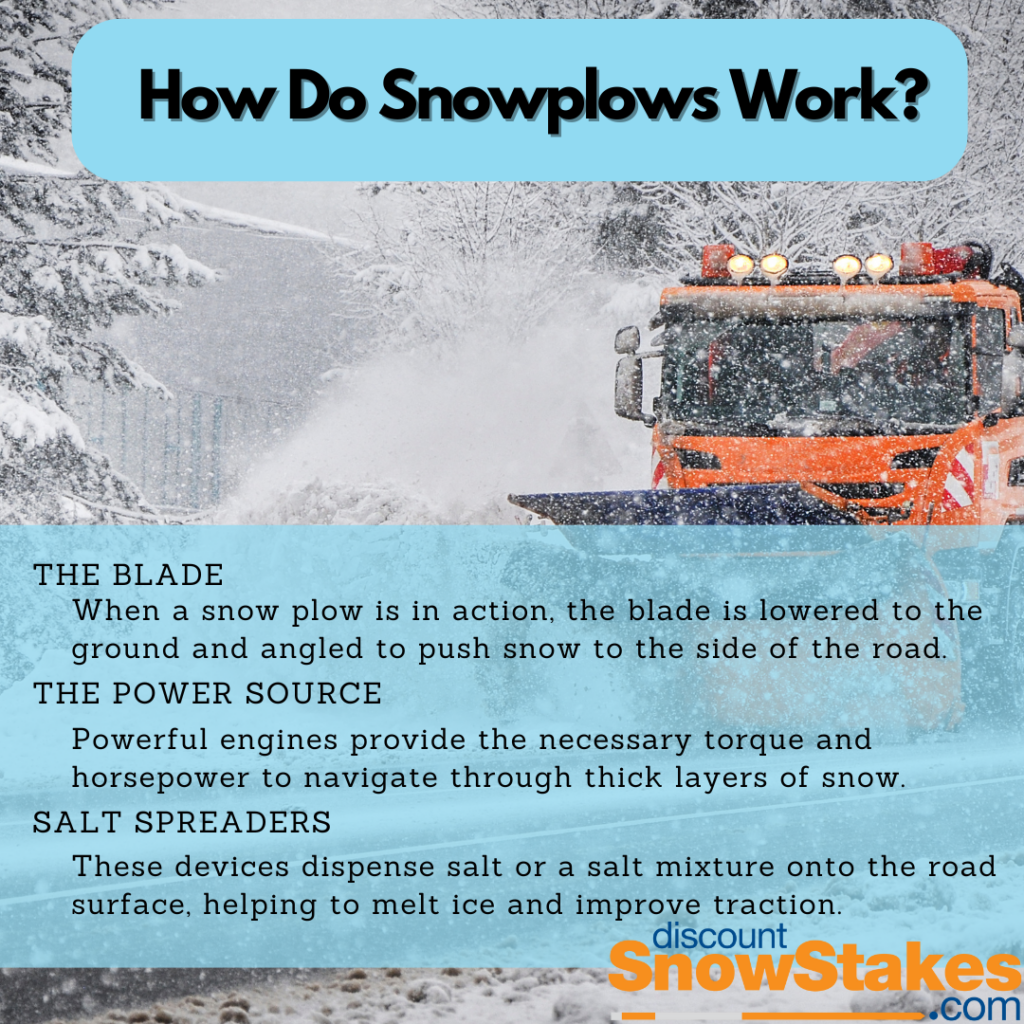While winter is winding down, here at Discount Snow Stakes, we’re always thinking about the snow. And one question many people wonder is, how do snowplows work? Well, let’s answer that question!
The Blade
At the heart of every snow plow is its blade—the primary weapon against snow accumulation. Blades come in various shapes and sizes, from straight edges to V-shaped configurations. The choice of blade depends on the intended use and the type of snow expected in the region.
When a snow plow is in action, the blade is lowered to the ground and angled to push snow to the side of the road. This process requires precision and control, which modern snow plows achieve through hydraulic systems. These hydraulics allow operators to adjust the angle and height of the blade, ensuring efficient snow removal without damaging the pavement beneath.
The Power Source
Snow plows are typically mounted on trucks or heavy-duty vehicles equipped with powerful engines. These engines provide the necessary torque and horsepower to navigate through thick layers of snow and propel the plow forward. In regions with heavy snowfall, snow plows may also have specialized features like all-wheel drive or traction control to enhance their maneuverability in challenging conditions.
Salt Spreaders
In addition to clearing snow, many snow plows are equipped with salt spreaders. These devices dispense salt or a salt mixture onto the road surface, helping to melt ice and improve traction. The integration of salt spreaders with snow plows streamlines the winter maintenance process, making roads safer for drivers.

Operational Control
Traditionally, snow plows were operated manually, with drivers controlling blade angles and other functions from the vehicle’s cabin. However, advancements in technology have led to the development of automated and semi-automated snow plows. These systems use sensors, GPS technology, and onboard computers to optimize snow removal processes. Automated plows can adjust blade angles based on road conditions, detect obstacles, and even communicate with other plows for coordinated clearing efforts.
Safety
Safety is paramount in snow plow operations. Modern plows are equipped with safety features such as LED lighting for visibility, cameras for enhanced visibility around the vehicle, and collision avoidance systems to prevent accidents. Operators undergo rigorous training to handle these machines safely and efficiently, especially when working in low-visibility or high-traffic situations.
Environmental Considerations
As concerns about environmental impact grow, snow plow manufacturers are increasingly focusing on eco-friendly technologies. This includes using biodiesel or electric-powered vehicles for snow plowing, implementing efficient salt-spreading techniques to minimize environmental damage, and exploring alternative de-icing agents that are less harmful to ecosystems.
In conclusion, snow plows are marvels of engineering designed to combat winter’s challenges and keep our roads clear and safe. From their sturdy blades and powerful engines to advanced automation and environmental considerations, snow plows represent a blend of innovation and practicality. That’s how snowplows work.